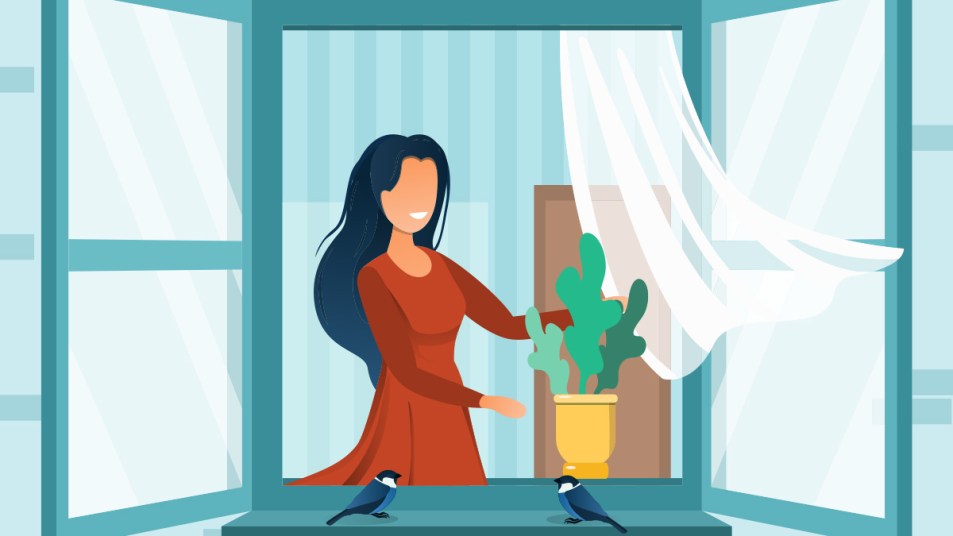Spring Weather Has 3 Surprising Mental Health Benefits — Here’s How To Tap Into Them
Spending time in nature has some amazing perks.

Every spring, you likely bask in the sunny and warm weather bringing trees and plants to life. When fully alive, these natural gems are beautiful to look at and can even lift your overall mood. This springtime effect contrasts winter-related seasonal affective disorder (SAD), a type of depression that occurs when the seasons change. Symptoms of SAD include low energy and feeling sluggish. While the specific causes of SAD are still being studied, science suggests that reduced sunlight during fall and winter decreases levels of serotonin — a mood-regulating brain chemical. Hence why, symptoms of SAD are believed to lessen when spring is in full swing.
With this news, you should take advantage of the beautiful days finally being here. The best way to do this: Spend more time outside. Whether you take an afternoon stroll or simply open a window, making nature part of your daily routine helps you feel better from the inside out. This in turn keeps you free of stress, aches, and lethargy that might plague your body throughout the day. Wondering how these simple habits improve your mental and physical health? Keep reading to learn the well-documented benefits of spending time in nature.
To Relieve Stress: Sit Beside a Tree
It may sound strange, but standing near a tree and breathing in its distinctive aroma could help you feel calmer and more relaxed. How? The USDA Forest Service explains that this is because trees release calming aromatic compounds called phytoncides, which are easily absorbed through the lungs. As a result, spending time around trees aids in spurring feelings of relaxation.
To Erase Aches: Soak in the Sun
More time enjoying long walks, freshening up your home, and tending to your plants could increase risk of muscle and joint aches. The good news: Stepping outside for a few minutes midday to soak up a little sun may help reduce stiffness and pain. According to Medical News Today, moderate exposure to ultraviolet B (UVB) rays from sunlight allows the body to produce pain-blocking hormones called beta-endorphins. Avoid spending too much time in the midday sun as overexposure to UVB rays causes sunburn.
To Restore Energy: Breathe Warm Spring Air
Instead of refilling your coffee mug when you feel sluggish, open up a window so a spring breeze can flow through your home. A 2010 review of studies suggests that taking in characteristics of outdoor environments like breathing fresh, oxygen-rich air could boost energy. Although this research was mostly observational, lead author Richard M. Ryan, PhD, highlights the overall healing connection that humans have to nature. “Nature is something within which we flourish, so having it be more a part of our lives is critical, especially when we live and work in built environments,” he says in a press release.
This content is not a substitute for professional medical advice or diagnosis. Always consult your physician before pursuing any treatment plan.
A version of this article originally appeared in our print magazine, Woman’s World.













